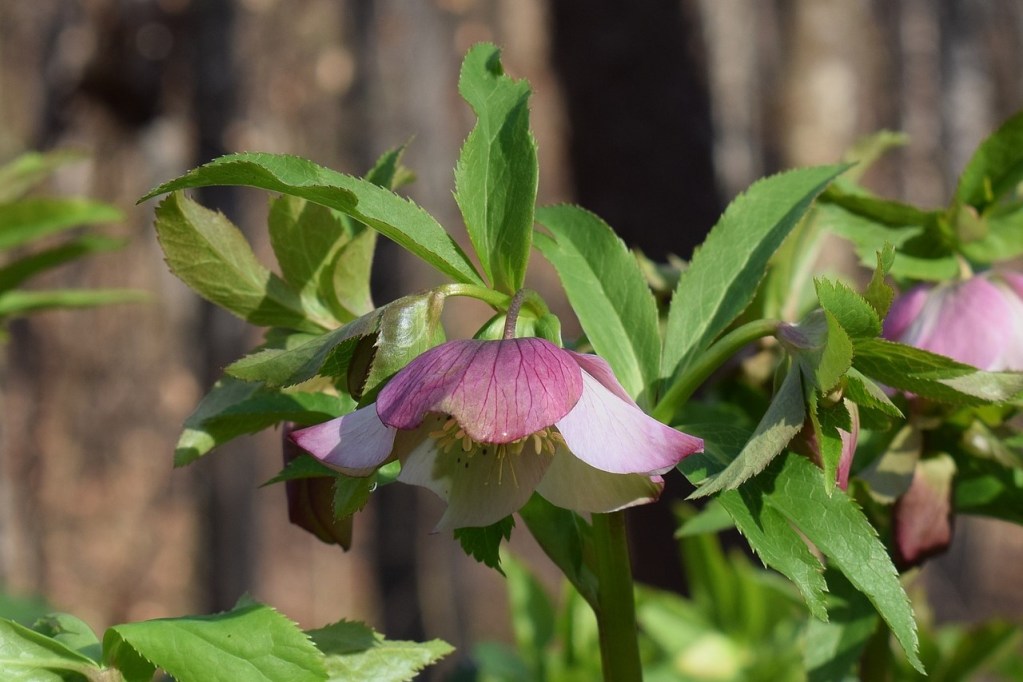
Lenten roses, also known as hellebore, are beautiful, delicate-looking flowers that come in many colors and patterns. As shade-loving flowers, they’re particularly useful for brightening up darker sections of your garden. Whether you want a classic solid purple variety or a more intricate spotted one, there’s a perfect lenten rose for any garden. Looking for a new lenten rose variety to add to your home or garden? Try one of these five!
Fire and Ice
Fire and Ice is a stunning white and pink variety from the Winter Jewels series. Each petal is predominantly white, but the edges are a vibrant shade of pink. It has double-petaled flowers, meaning there are two layers of petals, giving the blooms a fuller appearance. Fire and Ice grows to around a foot and a half tall and is an early-blooming lenten rose. While hellebore are generally among the earliest blooming spring flowers, Fire and Ice often blooms during winter.

Janet Starnes
Janet Starnes blooms lovely light green flowers in late winter or early spring, but the main appeal for many gardeners is actually its leaves. The leaves of the Janet Starnes lenten rose are mottled with shades of green and occasionally yellow, as well as speckled with white. If this unique coloration isn’t enough, the edges of the leaves have thin spikes. It’s a deterrent for pests, but an enticement for gardeners!

Ivory Prince
Ivory Prince is a variety that blooms from late winter until the middle of spring, and it’s a fantastic choice if you love high-contrast plants. The leaves of the Ivory Prince are dark green, while the flowers are a light creamy white. Adding a third color to the mix, the flower buds are dark pink. The pink color remains on the outside of the flower, making it a treat from every angle. A compact hellebore variety, Ivory Prince also grows well in containers.

Snow Fever
If you love the speckled leaves of Janet Starnes but don’t like the thorns, then you’ll love Snow Fever. With beautiful white or pale green flowers and elegant speckled leaves, this lenten rose variety really stands out in the shade. Its leaves can be green and white or pink and white, and it has a spreading habit that makes Snow Fever an excellent centerpiece. Consider planting it with coral bells or painted ferns to create a colorful foliage arrangement.

Cinnamon Snow
Cinnamon Snow lenten roses bloom in shades of white and cream with a light cinnamon-pink overtone, and the slight wave shape to their petals makes them look soft and delicate. With dark leaves and tall stems, this hellebore variety almost resembles an orchid, and it makes a fantastic desk plant. Their flowers grow on dark red stems that are sure to delight you and your guests.
No matter the type of garden you want, one of these five lenten rose varieties will be sure to fit right in. Whether indoors or outdoors, on their own or paired with other plants, you’ll love your new hellebores!




